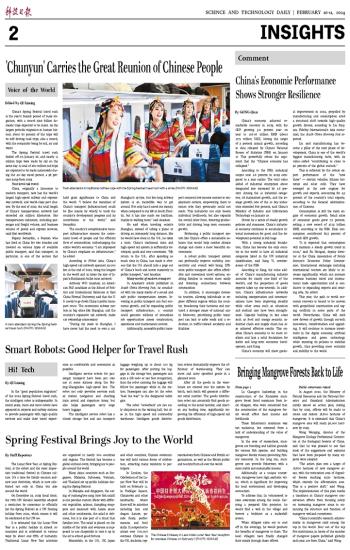
China's economy achieved remarkable recovery in 2023, with the GDP growing 5.2 percent year on year to 126.06 trillion RMB (about 17.71 trillion USD), hitting the target of 5 percent annual growth, according to data released by China's National Bureau of Statistics (NBS) on January 17. This powerfully rebuts the argument that the "Chinese economy has collapsed."
According to the NBS, industrial output rose 4.6 percent in 2023 compared to a year earlier. The total value added of industrial enterprises above designated size increased by 4.6 percent. Among the 41 industrial categories, 28 maintained growth, and the average growth rate of the 10 key industries exceeded five percent, said China's Ministry of Industry and Information Technology on January 19.
Driven by a series of steady growth policies and measures, China's industrial economy continues to accumulate internal momentum for good, and the development potential is still huge.
With a strong industrial foundation, China has become the only country in the world to have all industrial categories listed in the UN industrial classification, said Kang Yi, commissioner of the NBS.
According to Kang, the value added of China's manufacturing industry accounts for nearly one-third of the world's, and the proportion of goods exports takes up one-seventh. In addition, China's infrastructure networks including transportation and communications have been improving steadily while other areas such as education and medical care have been strengthened. Capacity building in key areas such as food and energy security, industrial chain and supply chain has also achieved effective results. This enables China's economy to be more resilient and lays a solid foundation for stable and long-term economic development, said Kang.
China's economy will show gradual improvement in 2024, propelled by manufacturing and consumption amid a structural shift towards high-quality growth drivers, according to Liu Peiqian, Fidelity International's Asia economist, the South China Morning Post reported.
Liu said manufacturing has become a pillar of the next phase of development. China is one of the world's biggest manufacturing hubs, with its value-added "contributing to close to 30 percent of the global outlook."
This is reflected by the robust export performance of the "new three" — electric vehicles, lithium batteries and solar cells. They have emerged as the new engines for growth and exports, accounting for 4.5 percent of the country's total exports, according to the General Administration of Customs.
Consumption is still the main engine of economic growth. Retail sales of consumer goods grew 7.2 percent, setting a new record of 47.15 trillion RMB, according to the NBS. Final consumption contributed 82.5 percent of overall GDP growth.
"It is expected that consumption will maintain a steady growth trend in 2024," said Xu Hongcai, deputy director at the China Association of Policy Science's Economic Policy Commission. International exchanges including international tourism are likely to increase significantly, which can increase overseas business travel and international trade opportunities and is conducive to expanding exports and creating jobs, Xu added.
This year, the path to world economic recovery is bound to be uneven with geopolitical uncertainties and raging conflicts in some parts of the world. Nevertheless, China will seek new drivers of growth through sci-tech innovation, transformation and upgrading. It will continue to increase investment in the digital economy, artificial intelligence and green technology, while ensuring its policies to stabilize growth, thus providing more certainty and stability to the world.


 Next
Next




